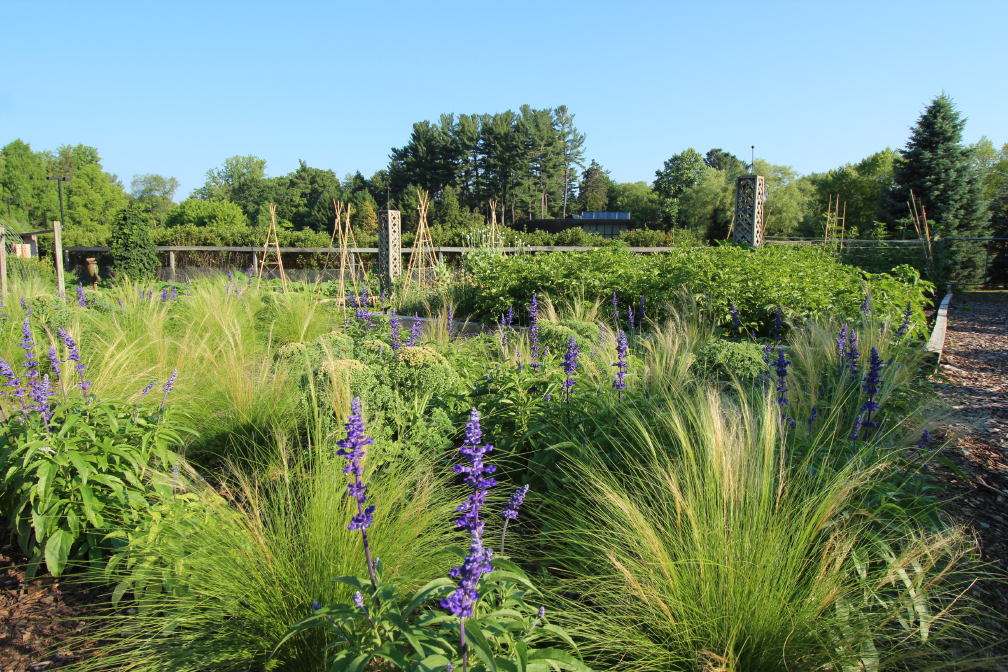Creating A Landscape
Thursday, July 29th, 2016
Surrounding the Climate Change Garden is a collection of display plantings. The Pounder Vegetable Garden utilizes the majority of the space in the garden, while the Climate Change Garden is tucked in the corner of the garden at approximately a quarter of the total size of the space. The display beds form a visually pleasing division between these spaces. Even though the tour through the Climate Change Garden is self-guided, the display beds and signs are designed to indicate a sense of direction for the visitor. This is important in facilitating the visitor surveys because they are meant to evaluate whether the garden has impacted the visitor’s understanding of climate change in any way.
As you enter the Climate Change Garden, a bed to your right consists of compact shrubs (Bluebeard; Caryopteris xclandonensis ‘Beyond Midnight’) that will reach about 2 1/2 feet at maturity and will set panicles of blue flowers from late summer into fall. This boarder will help deter the visitor from walking into the neighboring beds of corn in the Pounder Vegetable Garden. After exiting the high tunnel, the visitor reaches the end of the garden tour surrounded in two large garden beds of Stonecrop (Hylotelephium spectabile “Autumn Joy”), annual salvia (Salvia farinaceae “Victoria”), perennial salvia (Salvia nemorosa “Marcus”), and Mexican feathergrass (Nassella tenuissima).
In addition to creating a guide through the garden, as well as adding a beautiful border, many of the chosen plants are resistant to droughts, making them appropriate choices for possible climates in 2050 as well as the hot and dry weather of this 2016 summer. Next year we plan to continue this theme along the south border of the garden.
Written by Jessica Barbini (2016 Cornell Botanic Gardens Intern)










